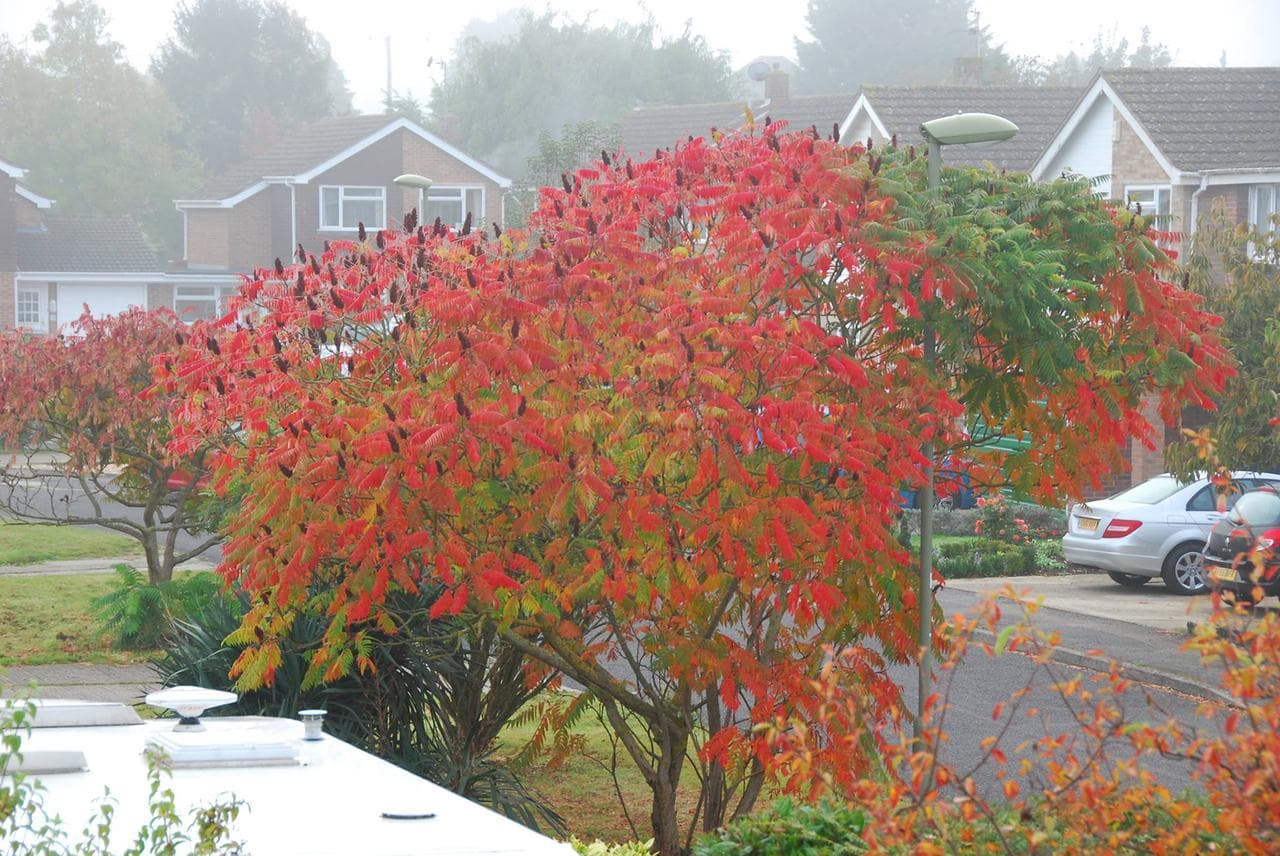
with David Fuller

Why light at night should be more of a conservation issue
As long-time viewers of my Eyes on the Sky videos know, I am a big advocate of reducing light pollution. And as I've read up more on not only tent camping (star parties, here I come!), but even doing some backpacking/camping, I've discovered the Leave No Trace principles. To me, that's another facet of conservation that I've discovered - leave things as they were (or better) then how you found them. Conservation covers much more than that though: Preserve, protect and restore a natural environment as much as possible.
I think light should be a part of that discussion too, but it almost never is.
Conservation encompasses many things, but I am often surprised how few people that are heavily involved in conservation know about light pollution, or for that matter, the powerful effects of even small amounts of light. It's not that they don't care; it's more often that they don't even know. I mean, just look at what a streetlight can do to the leaves on a tree:

Notice the green leaves where the rest have turned red for autumn?
Very often those who are avid bird watchers know something about light at night (LAN) because lights from buildings at night confuse migratory birds, and can lead to many bird deaths from crashes and exhaustion. Those who help the turtles along certain beaches also understand light pollution, as baby turtles look to the light reflecting off the sea to know which way to go. Light pollution causes them to go the wrong way.
Educating a wider audience
But many conservationists, even those who think of themselves as friends of nature but not necessarily activists, are almost entirely unaware of LAN issues. I discovered this when I noticed that Big Agnes introduced a line of tents with electric lighting built into it, and detailed some reasons why that can be detrimental to human health in an online forum.
Let's just say that much of the reception to me not thinking these tents were a good idea was met with a less than welcome reception from many. Yes, I realize there are many ways to light a tent - flashlights, lanterns, phones, etc. But often when provided with more light, people tend to use it. Plus, integrated lighting is harder to filter out than that of a flashlight or even battery-powered lantern.
That's not to say there weren't those who agreed with me; there were. Mostly they also knew about astronomy though. So let's begin there, this being an astronomy website blog.
Red light, white light
Amateur astronomers know that red light preserves dark adaptation. When we are looking for some 'faint fuzzy' at the eyepiece of our telescope, the more dark adapted we are, the more we see. But to find those objects in the first place, a star chart is required. Before tablets, smartphones and laptops, a paper chart or book was the way to find those objects. A way to see those was needed. A red-tape or cellophane covered flashlight (the dimmer, the better), helped to preserve dark adaptation.
The quickest way to ruin it? White light.
But here's the thing: Not all white light is created equal. Oh sure, for ruining dark adaptation, any old white light will do. Let's go back in time a few centuries though.
Fire and light
Before the invention of the electric light, how did we humans get by and manage after dark? Even under a completely moonless sky, the human eye can still see; it is amazingly sensitive to light even 1 millionth that of the full Sun. But that doesn't mean we feel particularly safe or see well at those levels; however, with a waxing/waning gibbous Moon up to a full Moon, humans see remarkably well - even with a bit of color. But to see even better than moonlight, we had one other option available:
Fire.
Campfire, candles, whale oil lamps, torches, you name it, and they all pretty much had one thing in common: They were yellow/orange/red in color. While the Moon produced white light, at maximum, it's only 1 lux of light - not enough to harm sleep.
But that all changed when we added artificial light at night to our after-sunset environment. Not only was there more light, as we advanced, the type of light changed. A few incandescents didn't alter much; they were relatively dim, and are heavily skewed towards warmer colors like fire. But then they got brighter, and we added streetlights, like mercury vapor and high pressure sodium. Today, LED's are being introduced, and with little study on their effects on not only humans, but the wider environment. And those have a bigger problem: LED's have a lot of blue in their light.
Color of light matters to sleep
See, during the day, even on cloudy days, we get a lot of blue wavelengths of light. The photosensitive cells in our retina called melanopsin are sensitive to blue light - specifically, the 440nm to 460nm range - and turn off all our "sleep" physiology, and tell our brain to turn on the "wake up" physiological processes.
And it doesn't take much blue light to do this - 1 lux of blue light can suppress melatonin, the key hormone required for sleeping well. Some people can sleep without it, but most won't get as good of sleep without it. Increasingly, researchers are also finding links to obesity, diabetes, breast and prostate cancers from this reduced melatonin. And why is melatonin reduced?
Blue light. It turns off your "go to sleep" switches. It's the "wake up" color of light for humans. It doesn't matter that you're not seeing a blue sky - ANY blue wavelengths will do the trick. And what is rich in blue light?
LED lights, specifically, the high intensity ones. That is, all the ones in the following:
- Computer screens
- Smartphone screens
- Tablet screens
- HD televisions
Plus, every LED light that has that "icy-cold" look to it? Hi intensity LED. Flashlight? Hi intensity LED. Those headlights you hate to see coming because they hurt and look purplish? Hi intensity LED's. All the same thing. Lots of blue, and your eyes tell your brain, "Stay awake!"
There's no curtains or blindfolds in nature
How does this affect anything with respect to camping? I know - this is a long story to get here, but it's worth understanding. Light matters too. Many who complain about light streaming into their bedrooms at night and can't sleep are told, "Buy light block curtains!" or "Put on a blindfold sleeping mask."
Easy to say if you're a human. But how are animals supposed to do that?
We know there are detrimental effects of LAN that affects more than the sky. Bats find more insects near lights, which have both altered their feeding due to the light being present. We've learned of spiders who have done the same. But what about about the nocturnal creatures who are avoiding the light, trying to stay away from it? They've been affected too.
Be a good house guest
If we really want to "Leave no trace" shouldn't we be using less light - or at least, a lot less of the light that affects animals when we are out in THEIR home, the Great Outdoors? If we really call ourselves conservationists, why are we putting a creature-comfort of lighting into a tent, where we should be trying to sleep at night, of which that light is known to suppress melatonin and harm our ability to sleep well?
We need to be thinking about more than just ourselves. I'm not saying that we can't enjoy the great outdoors at night, and that so doing requires us to turn off every piece of illumination. We can use some artificial illumination. But we need to be respectful of our environment. We know not to feed the raccoons because it alters their behavior in negative ways. We know to use bear canisters in bear country, because it keeps from altering their behavior that can wind up being detrimental to humans from interactions with bears.
So shouldn't we be more respectful of our non-human hosts when camping? Shouldn't we offer up less light, more 'naturally-colored' light such as that from fire, or at the very least, illumination levels that are at the level of the full Moon, or less?
What to do?
Use a red light, preferably a dim one, but at least use red as much as possible. Or if you're in a spot where you can, use a campfire. If you must use white light, keep it on for only as long as you need it, then turn it off in favor of a red one. We're the house guests in nature; don't be a bad one by blinding the hosts with blue-rich LED's. That's artificially altering their environment, just like leaving food out and changing their behavior.
I can't think of a better way to respect nature than to allow it to remain as close to natural as possible. And the side benefit of all this? We see more stars, too. And that's preserving a huge natural resource that's right over our heads, which everyone can then enjoy.
